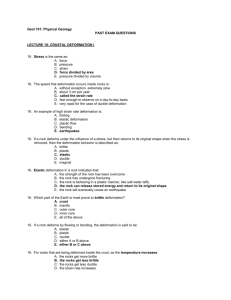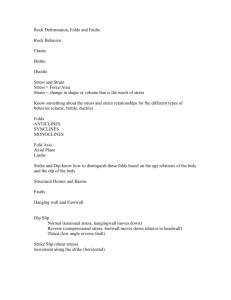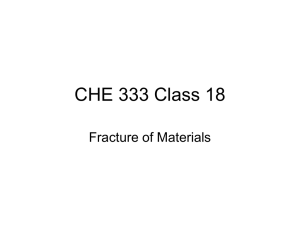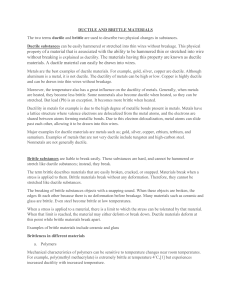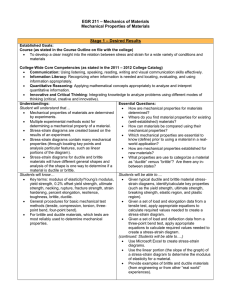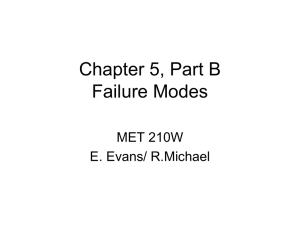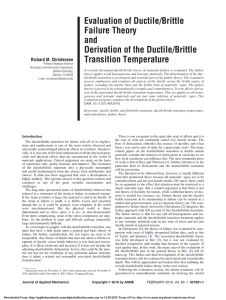Structural Geology
advertisement
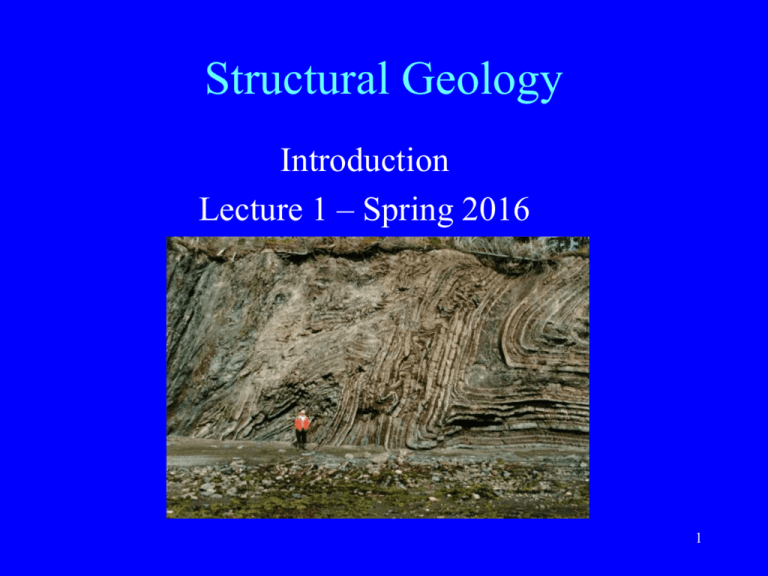
Structural Geology Introduction Lecture 1 – Spring 2016 1 What is Structural Geology? • Structural Geology is the branch of geology that deals with the form, arrangement, and internal structure of the rocks, and especially with the description, representation, and analysis of structures, chiefly on a moderate to small scale • Similar to tectonics, but the latter term is used for broader regional or historical structures 2 Geologic Structure • A geometric feature in rock whose shape, form, and distribution can be described There are several ways in which structures can classified Different classification methods are useful in specific circumstances so several will be discussed 3 Geometrical Classification • A. Planar to subplanar • B. Curviplanar • C. Linear 4 Geological Significance Classification • A. Primary - Formed by the formation of the rock itself • B. Local gravity-driven - formed due to slip down an inclined surface - Includes: Slumping, at any scale, driven by gravitational potential which exceeds friction • C. Local density-inversion driven - formed because of local lateral rock-density variations, causing local buoyancy forces • D. Fluid-driven pressure: Injection of unconsolidated material due to sudden release of pressure • E. Tectonic - Formed due to interactions between lithospheric plates, or regional interactions between the asthenosphere and the lithosphere. The forces are gravitational, trying to achieve isostatic equilibrium, at crustal to lithospheric scales 5 Debris Flow • Flowing mixture is dominantly sediment 6 Time of Formation Classification • A. Syn-formational - Structure forms at the same time as the material that forms the rock • B. Penecontemporaneous - Formed after deposition, but before full lithification • C. Post-formational - Structure forms after the rock has fully formed, as a consequence of forces not related to the formation of the rock 7 Formation Process Classification • A. Fracturing - related to development or coalescence of fractures in rock • B. Frictional sliding - The slippage of one rock past another, or of grains past each other, resisted by frictional forces • C. Plasticity - Deformation by the internal flow of crystals w/o loss of cohesion, or non-frictional sliding of crystals past each other • D. Diffusion - material transport either in the solid-state or by dissolution in a fluid 8 Mesoscopic Cohesion Classification • A. Brittle - loss of cohesion across a mesoscopically discrete surface • B. Ductile - w/o loss of cohesion across a mesoscopically discrete surface • C. Brittle/ductile - some combination of the two behaviors 9 Brittle vs. Ductile Response • Marble squeezed in a compression test will either deform by cracking (fracturing; brittle behavior on b) or flowing (ductile behavior on c) depending on pressure and temperature conditions 10 Scale of Observation • The scale of observation is often divided into three categories: Micro – visible optically in thin section, or at even smaller dimensions seen in an electron microscope Meso – visible in a single outcrop, but not necessarily traceable from outcrop to outcrop Macro – Traceable from outcrop to outcrop, and sometimes over whole mountain ranges 11 “Significance of Strain” Classification • A. Contractional - Shortening of a region • B. Extensional - Lengthening (extension) of a region • C. Strike-slip - movement w/o dimensional change 12 Distribution of Deformation Classification • A. Continuous - deformation throughout the rock body, on all scales • B. Penetrative - At the scale of observation, occurs throughout the rock body - at finer scales, there may be gaps between structures • C. Localized - Continuous or penetrative throughout a definable sub region of the overall structure • D. Discrete - a structure which occurs as an isolated feature 13 Brittle/Ductile Distinction • These types of deformation may be on the basis of mesoscopic cohesiveness Brittle – Joints, veins some faults are primarily brittle Ductile – Cleavage, foliation, and folding are usually ductile Strain rate is very important An increase in strain rate can transform ductile to brittle deformation 14 Plate Tectonic Features • Figure 1.4 in text 15
